Central Canada is comprised of: Ontario (226,610) and Quebec (93,625).
Ontario
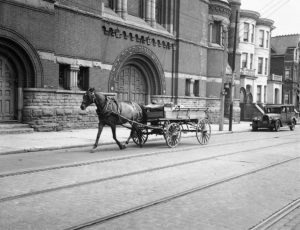 Most of the earliest immigrants were from Britain or Germany. The first permanent Jewish resident of Toronto was Judah Joseph, who arrived in 1838. Joseph came from Britain via the United States, first to Hamilton, Ontario and then to Toronto.
Most of the earliest immigrants were from Britain or Germany. The first permanent Jewish resident of Toronto was Judah Joseph, who arrived in 1838. Joseph came from Britain via the United States, first to Hamilton, Ontario and then to Toronto.
In 1849, land was purchased for a Jewish cemetery on behalf of the Toronto Hebrew Congregation, the Daytshishe Shul. In 1856, Lewis Samuel of York, England helped to found the Sons of Israel Congregation, which merged with Toronto Hebrew Congregation in 1858.
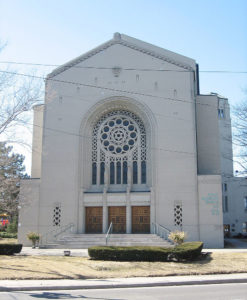 By 1871, there were still only 528 Jews in Ontario, with Toronto and Hamilton accounting for over half of this number. In the 1880s there was a surge in Yiddish speaking immigrants from eastern Europe. These immigrants came to Canada looking for a better life, fleeing poverty, economic depression, and religious oppression. While the majority settled in existing Jewish communities like Toronto and Montreal, others in Ontario settled in smaller towns throughout the province, often becoming storekeepers.
By 1871, there were still only 528 Jews in Ontario, with Toronto and Hamilton accounting for over half of this number. In the 1880s there was a surge in Yiddish speaking immigrants from eastern Europe. These immigrants came to Canada looking for a better life, fleeing poverty, economic depression, and religious oppression. While the majority settled in existing Jewish communities like Toronto and Montreal, others in Ontario settled in smaller towns throughout the province, often becoming storekeepers.
Three new synagogues were established around this time. Goel Tzedek and Beth Hamidrash Hagadol Chevra Tehillim, were founded by Russian Jews in 1883, and Shomrei Shabbos, founded in 1888 by Jews from Galicia, Poland. In 1889, two more congregations were established: Beth Jacob, known as the Poylishe Shul, and Adath Israel, founded by Romanian Jews. From 1901 to 1927, the Jewish population of Canada grew from under 17,000 to 125,000, with Ontario having close to 50,000 Jewish residents. In 1911, they started building the Knesseth Israel synagogue, which was dedicated in September, 1912.
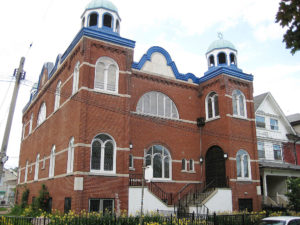 After 1927, Jewish immigration to Canada came to a near halt with new restrictive immigration laws. These laws affected all applicants but especially the great number of eastern European Jews trying to escape increasing antisemitism. The government did not change its policy during the 1930s in spite of the increasing knowledge of the plight of Jews in Europe. While these laws were partly the result of the depressed economy in Canada, they also reflected the antisemitic attitude of some key politicians of the day.
After 1927, Jewish immigration to Canada came to a near halt with new restrictive immigration laws. These laws affected all applicants but especially the great number of eastern European Jews trying to escape increasing antisemitism. The government did not change its policy during the 1930s in spite of the increasing knowledge of the plight of Jews in Europe. While these laws were partly the result of the depressed economy in Canada, they also reflected the antisemitic attitude of some key politicians of the day.
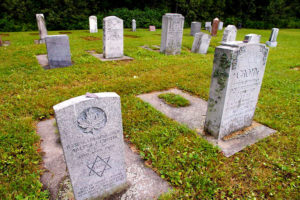 At the end of the war, Canada’s policy changed and from 1947-1950 a large wave of immigrants came to Canada including 100,000 displaced persons‚ many of them Jewish Holocaust survivors. Immigration in the 1960s-1970s saw immigration to Ontario from Quebec, northern and southern Africa, and the former Soviet Union, due to future political uncertainty. In the late 1980s, when the Soviet Union eased its restrictive rules on Jewish emigration. Large numbers of Jews came to Ontario and especially Toronto.
At the end of the war, Canada’s policy changed and from 1947-1950 a large wave of immigrants came to Canada including 100,000 displaced persons‚ many of them Jewish Holocaust survivors. Immigration in the 1960s-1970s saw immigration to Ontario from Quebec, northern and southern Africa, and the former Soviet Union, due to future political uncertainty. In the late 1980s, when the Soviet Union eased its restrictive rules on Jewish emigration. Large numbers of Jews came to Ontario and especially Toronto.
Today Ontario’s Jewish population stands at about 212,000. Nearly 180,000 of those Jews are concentrated in the greater Toronto area, which is rich in Jewish organizational and religious life. Only Ottawa, Canada’s capital city, Hamilton, London, Windsor, and Kingston have large Jewish populations. There are 118 synagogues and congregations in the Toronto area and about 80 Jewish schools.
Quebec
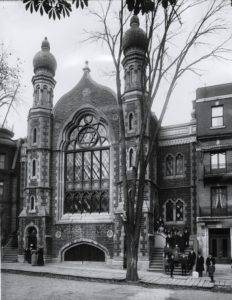 Quebec’s first Jewish settlers accompanied the British military during the Seven Years’ War when it captured the vast territory from the French in 1760. In December 1768, under the new British rule, twelve families from New York moved to Montreal. Berlin-born army purveyor and later fur trader, Ezekiel Solomon, along with Hart, founded Canada’s first synagogue, Shearith Israel Congregation, known as the Spanish and Portuguese Synagogue. The first synagogue was built in 1777. By 1830 there were about 100 Jews in Lower Canada.
Quebec’s first Jewish settlers accompanied the British military during the Seven Years’ War when it captured the vast territory from the French in 1760. In December 1768, under the new British rule, twelve families from New York moved to Montreal. Berlin-born army purveyor and later fur trader, Ezekiel Solomon, along with Hart, founded Canada’s first synagogue, Shearith Israel Congregation, known as the Spanish and Portuguese Synagogue. The first synagogue was built in 1777. By 1830 there were about 100 Jews in Lower Canada.
It was not until 1846 that Montreal’s second congregation and the first Ashkenazic synagogue was established. A Jewish cemetery was consecrated in 1853. The Synagogue of English, German, and Polish Jews was finally able to construct a synagogue in 1858 and was renamed Shaar Hashamayim.
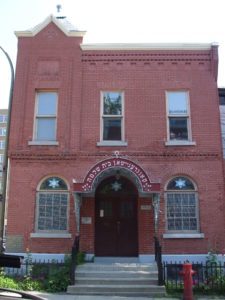 In the 1870s Jews from Eastern Europe began arriving in Montreal. By 1886 there were some 3,000 Jews in the province, but it was not until 1892 that the first synagogue was built in the lower town section of the city. From the mid-1890s and the onset of World War I in 1914 the Jewish community of Quebec, largely centered in Montreal, increased nearly fourfold from 7,600 to 30,000.
In the 1870s Jews from Eastern Europe began arriving in Montreal. By 1886 there were some 3,000 Jews in the province, but it was not until 1892 that the first synagogue was built in the lower town section of the city. From the mid-1890s and the onset of World War I in 1914 the Jewish community of Quebec, largely centered in Montreal, increased nearly fourfold from 7,600 to 30,000.
Between 1921-1931, Greater Montreal had 45,802 Jews, with most of them living in the City of Montreal. By 1931 the Quebec Jewish population grew to nearly 60,000. The economic depression of the 1930s was characterized by a significant rise in antisemitism in the province. French Canadian economic progress urged a boycott of Jewish-owned businesses. Antisemitism was not confined to the French Canadian population, as certain programs at McGill University imposed quotas on the admission of Jewish students.
 By the 1940s, there were 80,000 Jews living in Montreal, most of whom worked in factories or owned small family businesses. In 1945, following much opposition, including legal action from the city council, a synagogue building was consecrated in the newer residential area in the upper town section of the city. Between 1947 and 1952, more than 4,500 Holocaust survivors settled in Montreal. In the late 1950s, 20,000 French-speaking Jews arrived from Morocco and other North African countries.
By the 1940s, there were 80,000 Jews living in Montreal, most of whom worked in factories or owned small family businesses. In 1945, following much opposition, including legal action from the city council, a synagogue building was consecrated in the newer residential area in the upper town section of the city. Between 1947 and 1952, more than 4,500 Holocaust survivors settled in Montreal. In the late 1950s, 20,000 French-speaking Jews arrived from Morocco and other North African countries.
 During the 1960s the Jewish community witnessed a significant expansion of its Jewish day schools. By 1970, the Jewish population of Montreal numbered approximately 120,000. During the 1970s the Quebec provincial government was more and more challenged by French-Canadian nationalists to protect and expand French language primacy in Quebec. As a result, 35,000 Jews left the province, notably the younger, better educated, and more mobile segment of the community. By 1971 the Quebec Jewish population had reached more than 120,000 persons, but declined quite sharply thereafter.
During the 1960s the Jewish community witnessed a significant expansion of its Jewish day schools. By 1970, the Jewish population of Montreal numbered approximately 120,000. During the 1970s the Quebec provincial government was more and more challenged by French-Canadian nationalists to protect and expand French language primacy in Quebec. As a result, 35,000 Jews left the province, notably the younger, better educated, and more mobile segment of the community. By 1971 the Quebec Jewish population had reached more than 120,000 persons, but declined quite sharply thereafter.
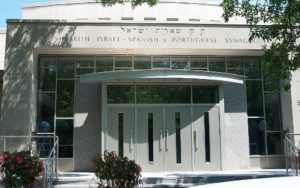 By 2001 the number of Quebec Jews dropped below 95,000. More than one out of five of the remaining Quebec Jews are over the age of 65. Approximately half of the Quebec Jewish student population are today enrolled in Jewish schools. Immigrants constituted one-third of the Quebec Jewish population. More recently efforts have been directed at attracting Russian and Argentinian immigration.
By 2001 the number of Quebec Jews dropped below 95,000. More than one out of five of the remaining Quebec Jews are over the age of 65. Approximately half of the Quebec Jewish student population are today enrolled in Jewish schools. Immigrants constituted one-third of the Quebec Jewish population. More recently efforts have been directed at attracting Russian and Argentinian immigration.
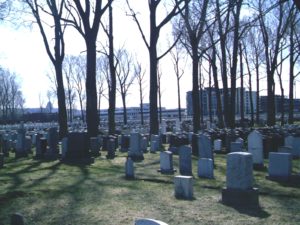
Quebec has both the largest French-speaking Jewish population on the continent and the largest share of Holocaust survivors of any Jewish community in Canada. Moreover it is one of the few Jewish communities in the world where Yiddish is still spoken almost as much as Hebrew. As a result of the pressure on the population to acquire the French language, Quebec Jews are the most trilingual group in North America.
Currently Montreal’s Jewish community is one of the oldest and most populous in the country, numbering about 90,780. The community is quite diverse, and is composed of many different Jewish ethnic divisions. There is also a substantial number of French-speaking Jews, as well as significant numbers of Russian Jews, Argentinian Jews, French Jews, Indian Jews, and Ethiopian Jews.